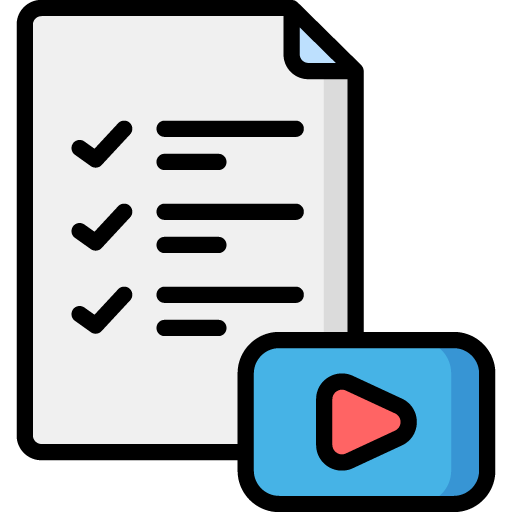Introduction: Why the B2B YouTube Myth Persists
Despite YouTube’s immense popularity, many B2B companies still believe the platform is better suited for B2C marketing. There’s a persistent myth that YouTube only works for trendy product demos, viral consumer content, or influencer-led reviews. The reality? YouTube is a powerful tool for building authority, educating customers, and generating leads—even in the most niche B2B markets.
This article breaks down the top misconceptions about YouTube in the B2B space and shows you how your company can harness it to drive real business growth.
“YouTube is Only for B2C”
Debunking B2B Video Marketing Myths
Myth #1: “Our Industry Is Too Boring for YouTube”
The Truth:
No industry is too boring—only poorly communicated.
B2B buyers are seeking solutions to problems, not entertainment. They use YouTube to research tools, watch tutorials, explore case studies, and vet vendors. Your expertise is your advantage. A plumbing manufacturer, a cybersecurity firm, or a logistics company can all create educational, evergreen content that builds trust and ranks on search.
Real Opportunity:
- Create explainer videos that simplify technical subjects.
- Use visuals to show off your process, behind-the-scenes, or data insights.
- Build playlists around common client questions to streamline the buyer journey.
Video Types That Work:
- Product walkthroughs
- Industry trends and analysis
- Expert Q&As
- Customer success stories
Myth #2: “B2B Buyers Aren’t Watching YouTube”
The Truth:
They absolutely are.
In fact, according to Google, 70% of B2B buyers watch videos during their decision-making process. And they don’t just watch—they take action.
Even C-level executives turn to YouTube for quick insights. Many prefer short-form, searchable video content to traditional whitepapers.
Where YouTube Fits in the B2B Funnel:
- Top of Funnel: Attract attention with thought leadership and keyword-driven content.
- Middle of Funnel: Deepen trust through demos, case studies, and team videos.
- Bottom of Funnel: Handle objections, show proof, and drive conversions.
Myth #3: “YouTube Is Too Saturated for Niche Industries”
The Truth:
Saturation is a B2C issue—B2B niches are often underserved.
This is your advantage. The lower volume of competition means even a handful of high-quality videos can help you dominate search results and become a trusted resource.
Case Example: A company offering supply chain software uploads 12 videos in a year targeting specific pain points. With proper SEO and thumbnails, they become the go-to YouTube source in their niche.
Tips for Niche Content:
- Use keyword research tools like TubeBuddy or VidIQ.
- Add clear metadata, transcripts, and relevant tags.
- Link videos in blog posts, emails, and proposals.
Myth #4: “We Don’t Have the Time or Budget to Invest in YouTube”
The Truth:
You don’t need a studio setup to start.
B2B success on YouTube isn’t about flashy edits—it’s about clarity, consistency, and connection. Many successful B2B channels film with smartphones, rely on repurposed webinar content, or do low-cost screen recordings with strong messaging.
How to Start Lean:
- Batch film multiple videos in a day.
- Use templates for intros/outros.
- Outsource editing to freelancers or partners.
- Repurpose blogs into scripts for simple voiceover + slides videos.
Cost-effective Ideas:
- Monthly Q&A
- 5-minute tutorials
- Use recorded Zoom calls for behind-the-scenes content
Myth #5: “YouTube Doesn’t Drive Leads for B2B”
The Truth:
YouTube builds long-term brand equity and leads, especially when connected with your website and CRM.
With proper calls to action and links, YouTube can become a lead-gen machine:
- Link to gated guides, whitepapers, or calendars in video descriptions.
- Use YouTube Cards and End Screens to funnel viewers.
- Build a custom audience in Google Ads based on views.
- Embed videos across landing pages and email nurturing.
Key Metrics to Watch:
- View Duration (signals engagement)
- Click-through Rate (thumbnails/titles effectiveness)
- Website Traffic from YouTube
- Video-assisted conversions in analytics
B2B YouTube Success Framework
Use this 5-part framework to guide your YouTube B2B strategy:
- Audience First: Know your ideal buyer, what they’re searching for, and what questions they have.
- Solve, Don’t Sell: Focus on helping first, selling second.
- Consistency Over Perfection: A regular schedule builds brand authority.
- SEO Matters: Optimize every title, description, and tag.
- Measure What Matters: Track progress over time, not virality.
Example Content Calendar (for B2B SaaS Company)
| Week | Video Title | Format | Goal |
| 1 | “What Is [Your Solution] & Why It Matters in 2025” | Talking Head | TOF awareness |
| 2 | “Top 3 Mistakes [Industry] Leaders Make” | Screen Share | TOF SEO |
| 3 | “Customer Q&A: How [Client Name] Saved 200 Hours” | Case Study | MOF trust |
| 4 | “Demo: How to Use [Feature] in 5 Minutes” | Tutorial | BOF action |
Final Thoughts: YouTube Is a B2B Differentiator
Don’t let myths stop your brand from claiming valuable digital real estate. The companies succeeding on YouTube aren’t the loudest or flashiest—they’re the most helpful, consistent, and authentic.
With strategic planning, even small B2B teams can:
- Own their niche
- Attract qualified buyers
- Establish thought leadership
- Reduce sales cycles with on-demand trust-building content
The real myth? That you can afford not to be on YouTube.







 Edit Your Footage
Edit Your Footage